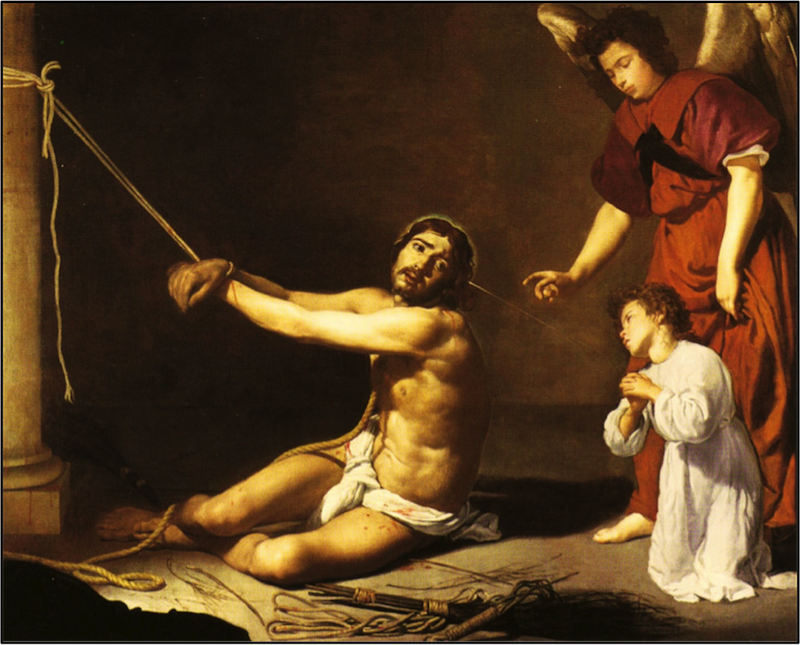There's something insulting about this . . .
Lou Kaloger
A painting hangs in Room 30 of the National Gallery in London. It’s by the 17th-century Spanish artist Diego Velázquez (1599-1660). The title of the painting is a bit of a mouthful. It is called Christ After the Flagellation Contemplated by the Christian Soul. The painting depicts a scourged Christ still tied to his whipping post, an angel wearing a red robe, and a kneeling child dressed in white. If you look closely you can also see a thin beam of light traveling from Christ to the child. It is an unusual painting. It’s not unusual because Velazquez depicted a beaten Christ—plenty of artists had done that. No, what makes this painting unusual is the strange title and the presence of the young child. So we look at the painting, and we wonder, and it doesn’t take long to realize that the child and the “Christian soul” are one in the same. And what of the attending angel? It’s interesting that the attending angel is not attending to Christ but is instead watching over the Christian soul personified as the child.So what is Velazquez saying? Well, the best I can tell, the child is us. We’re the ones who are weak, we’re the ones who are broken, we’re the ones in need of comfort. Is that the meaning of the beam of light? Is the beam of light a symbol of Christ’s comfort and grace and righteousness offered us, even at the time of his greatest trial?
I suppose there’s something insulting about the entire scene. We like to believe that we are strong, and that we have it together, and that our need is one of, perhaps, some fine tuning to smooth out a couple of our rough edges but hardly more than that. At our worst we might even be tempted to think that Jesus is pretty “lucky” to have us. But is that the portrait we see, either here in Velazquez’s painting or in the pages of Scripture?
